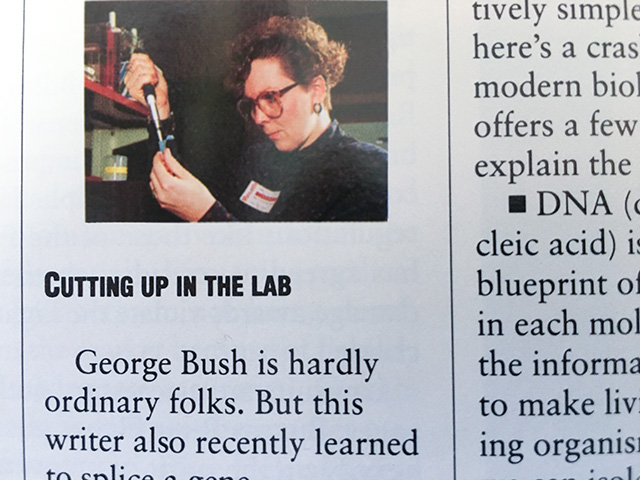Best Blog of the Week
Production Blog: Deep Dive in the Gene Pool
I was living in St. Louis, working as a freelance writer, the spring of 1989 when the editors of Monsanto Magazine asked if I would write an article about genetic engineering.
More specifically, I was asked to duplicate a gene-splicing experiment that then-vice-president George Herbert Walker Bush had performed in Monsanto's Chesterfield, Missouri, laboratory.
Bush had cut a DNA molecule into segments containing a gene for glyphosate tolerance.
My job was to use everyday terms to explain the intricacies of moving genes around and give readers a crash course in biology. It was hoped those explanations along with a slicing and dicing to-be president might also take some of the mystery out of the technology.
Those memories and many others came flooding back as we researched topics for the mid-February 2021 issue of Progressive Farmer. The issue takes a deep dive into the gene revolution and hinges on the 25th anniversary of the 1996 introduction of genetically engineered crops such as Roundup Ready soybeans and Bt corn and cotton.
DTN is posting many of these articles this week and I encourage thoughtful reading of them.
FARMER ACCEPTANCE HIGH
While scientists have long-been editing the genetic code of plants, biotechnology changed the landscape of agriculture. Today, American farmers plant 88% and 82% of cotton and corn acres, respectively, with Bt technology. Plantings of herbicide-tolerant crops are even higher: 95% cotton, 94% soybeans and 89% corn.
P[L1] D[0x0] M[300x250] OOP[F] ADUNIT[] T[]
But, while much of agriculture may have accepted the technology, society still balks. I often hear farmers wonder, and yes, even grumble, that anyone could question technology that makes life so much easier.
Yet, many do question and sometimes even fear, genetically altered foods. And, almost everyone in industry today agrees that agriculture as an industry did a poor job of selling the science.
I explore some of this history and why it is so important to discuss today in the article: "Gene-Altered Attitudes: Will consumers accept the next round of plant miracles?" You can read it here: (https://www.dtnpf.com/…)
The biotech we've mostly come to know during the past 25 years has leaned on transgenic techniques to add desirable genes from another species to create a plant with new characteristics. With Bt corn, for example, the introduced gene comes from Bacillus thuringiensis, which occurs naturally in the soil.
By comparison, new gene-editing tools make changes within the plant's existing DNA by deleting or changing functions. Scientists are working in wheat to strategically deactivate specific gluten proteins that cause sensitivity, for example.
Since nothing foreign is added, gene-edited plants are expected to be exempt from USDA's premarket field testing and data-based risk assessment if they meet specific criteria.
Will the public swallow these new, edited foods given that they promise to offer more benefit to the consumer than the genetically modified organisms (GMOs) of old? Industry has pledged to be more transparent, but how does that play out if some gene-edited foods aren't seen as genetically different?
THE REAR VIEW MIRROR
It's a funny thing about taking part in history -- you often don't realize it is happening at that very moment. Even looking at the photo of my younger self splicing that long-ago gene makes me want to ask: Who was that person and did she know what was about to unfold?
What I know is that I didn't know beans about genes back then. They weren't brought up in high school biology class and precious little was discussed in college classes.
I'll also admit that I was an early skeptic and that some of the heavy-handed practices industry doled out marketing the products didn't help my attitude. I was lucky in that my work opened doors to scientists willing to explain what I didn't understand and help me become more comfortable with the technology.
Farmers eager to adopt the technology often simply accepted. But consumers have proven with three decades of unrelenting passion that they want to know how their food is made.
Yep ... there are many other threads to argue here -- plant-based meat based on genetically engineered concepts, weed and pest resistance issues, and even, COVID-19 vaccines.
But if you are going to take a deep dive into the gene pool, don't just read the headlines. Dig into the science and find some solid talking points. The series of stories we've put together are aimed at furthering that discussion.
Pamela Smith can be reached at pamela.smith@dtn.com
Follow her on Twitter @PamSmithDTN
(c) Copyright 2021 DTN, LLC. All rights reserved.




